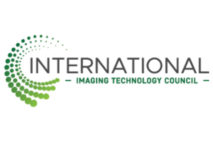On May 19, Clover Imaging Group officially announced that it will be exiting the European market as of June 2022.
It is no secret that Europe’s cartridge-remanufacturing industry has been under considerable pressure. Even before the COVID-19 pandemic, the industry suffered from competition from lower-priced new-build compatible cartridges made in China and shrinking print volumes as businesses shifted from print processes to digital. But COVID-19 and the resulting drop in office page volumes, accelerated digitalization, supply-chain tumult, and rising costs made things monumentally worse.
Still, the news that Clover Imaging Group—at one time one of the biggest remanufacturers in Europe—has made the tough decision to exit the European market comes as a bit of a shock and a sad sign of the times. The company, however, expressed that it is “bullish” about its main market in the Americas and the opportunity to grow via promoting remanufactured cartridges’ unique value proposition that combines saving costs with saving the planet.
A company spokesperson answered some of our questions about the decision and what it means for the company going forward.
Clover’s Statement
Clover announced that it would be exiting the European market on May 19. Its announcement reads as follows:
Clover Imaging Group Exiting Europe
Clover Imaging Group has announced that it is exiting the European market effective June 2022. Clover Imaging continues to see strong post-pandemic sales in the U.S., Canada, and Latin America and remains bullish about the opportunities in these markets. 100% of Clover Imaging’s focus and resources will be invested in growing sales in these regions.
Over the last two years, the European market has been hit particularly hard with supply chain disruptions and increased costs in freight, materials, labor, and utilities. These dynamics, coupled with several strategic accounts exiting Europe, and the European Commission’s rejection of the EVAP ‘Voluntary Agreement’, all factored into Clover Imaging’s decision.
Clover Imaging’s Vietnam facility will remain fully operational as a contract manufacturer for imaging supplies and other product categories.
Environmental sustainability and supply chain vulnerabilities have rapidly become major focuses throughout the public and private sector. Clover Imaging remains enthusiastic about the opportunities that lie ahead in the Americas as its unique value proposition that combines sustainability with cost savings continues to gain momentum with businesses and consumers seeking alternatives to costly OEM cartridges and the environmentally harmful single-use-plastic cartridges being imported from China and ending up in U.S. landfills.
A Little History
In discussing Clover’s exit from Europe, it is worthwhile taking a looking back at how the firm became a major player in the European market.
Clover was founded in 1996 and is now headquartered outside Chicago in Hoffman Estates, IL. In the opening years of the 21-century, the firm experienced triple-digit growth. After acquiring Ricoh’s compatible supplies division in 2005, the firm entered the market in Europe. As part of the deal, Clover picked up the Dataproducts third-party consumables line, which had shelf space at key North America big-box retailers and distribution across Europe. Clover also gained various manufacturing and logistics assets in Europe, including Ricoh’s new production plant in Porto, Portugal, which produced private-label toner and ink products.
After the huge deal with Ricoh, Clover continued to grow, acquiring various well-known remanufacturers like GRC and Cartridges Are Us. It began a mammoth expansion worldwide following its acquisition by Golden Gate Capital in 2010. Over the next few years, Clover went on a wild buying spree, snapping up numerous remanufacturing operations, empties collectors and brokers, and related businesses—many of them in Europe.
Clover’s acquisition spree helped drive consolidation in the marketplace, including in the highly fragmented European market. Bigger players like Clover began to dominate markets worldwide and won share from the remaining smaller players. Clover’s total revenue ultimately reached a zenith of $1.061 billion in 2015. At that time, the firm abandoning the European market would have been unthinkable—a safer bet would have been that Clover would continue to roll up industry players to become an even bigger force on both sides of the Atlantic.
However, over the next few years, the firm found its phenomenal growth fueled by both acquisition and organic growth could not be sustained. By 2016, the company had grown its remanufactured cartridge business in Western markets as much as it could given the declining demand for hardcopy in mature markets and increased competitive pressures from both new-build cartridge makers and OEMs. The firm took steps to shore up its margins by reducing costs and improving operations, which included consolidating its North American remanufacturing activities at its factory in Mexicali, Mexico (see “Clover Consolidates Mexican Manufacturing Operations under One Roof”). The firm took similar steps in Europe, relocating regional remanufacturing from Portugal to its acquired production facility in Serbia. While Clover’s efforts yielded some positive results, the firm continued to see revenue decline.
In the summer of 2019, news emerged that the value of Clover’s debt dropped and the company was exploring strategic options (see “Clover to Explore Strategic Options as Debt Plunges on Earnings Warning” and “Moody’s Downgrades Clover Parent 4L’s Debt, Warns Risk of Default Is High”). In November 2019, Norwest Equity Partners and Clover’s management team acquired Clover Imaging Group for approximately $215 million (see “Norwest Equity Partners Completes Acquisition of Clover Imaging Group”). 4L Technologies, better known as Clover Technologies, filed for bankruptcy not long after (see “Clover Technologies Pre-Negotiates Bankruptcy Reorganization” and “Clover Technologies Declares Chapter 11 Bankruptcy”). Clover Imaging Group, however, was not impacted by the bankruptcy filing because it was bought out first. When Clover announced its 25th anniversary at the end of 2021, the firm said it had over $350 million in annual revenue (see “Clover Celebrates 25 Years”). That is down significantly from the company’s revenue in 2015, but it is important to bear in mind that today Clover Imaging Group no longer includes the Clover Wireless and Clover Telecom businesses, which accounted for roughly half of Clover Technologies Group’s business before the split.
What Happened in Europe?
While Clover as a whole has experienced a downturn in its business over the last several years, conditions proved especially challenging in Europe. Obviously, one major cause of the firm’s troubles in Europe was entirely unexpected: a global pandemic that resulted in work shifting from the office to at home. A decline in office print volumes meant a decline for remanufactured toner cartridges—especially the higher-priced, high-yield toner cartridges on which Clover’s business depends. The firm got some reprieve from the uptick in printing at home, but this meant largely an upturn in demand for remanufactured inkjet cartridges, which sell at a fraction of the price of remanufactured toner cartridges for the office.
Clover responded the drop in demand for toner cartridges by further consolidating production. Clover switched from manufacturing toner cartridges in Vietnam to making face shields and other products outside its traditional imaging business at this facility and shifted more cartridge remanufacturing from its factory in Serbia to its plant in Mexico.
Clover’s announcement pointed to the “supply chain disruptions and increased costs in freight, materials, labor, and utilities” that have impacted so many companies over the past couple of years during the pandemic. This, however, is a truly global phenomenon. Thus, Actionable Intelligence asked Clover why supply-chain issues and rising costs proved especially problematic in Europe. A company spokesperson told us, “The majority of our European volume was supported by production in Vietnam and North America. That required a lot of overseas shipping—of empties, of components, and of finished goods. As a result, rising freight costs and lengthier overseas shipping times hit our European operations particularly hard.” It seems COVID-19 proved a perfect storm. The decline in demand seen amid the pandemic made consolidating cartridge production in Mexico necessary but that move came at a time of unprecedented delays and costs for overseas shipping.
Clover’s announcement pointed to another factor in its decision: “several strategic accounts exiting Europe.” Actionable Intelligence had heard that one problem for Clover in Europe was the Lyreco account. Lyreco claims to be Europe’s biggest distributor of office supplies and workplace service and the third biggest worldwide. Clover won this prized account from Turbon in 2018, causing a world of hurt for the German remanufacturer (see “Turbon Turnover Tumbles in FY 2018”). We understand, however, that Clover recently lost this key account to Armor.
When asked whether the loss of the Lyreco account played a role in its decision, Clover said, “Many market factors went into our decision not just one. Two of our largest North American strategic accounts exited Europe years ago.” Here, Clover is undoubtedly referring to Staples and Office Depot—long some of Clover’s most important accounts. After the Federal Trade Commission shut down the two giant office superstores’ plans to merge back in 2016 (see “Office Depot to Sell European Business, Staples Appoints New CEO”), Staples and Office Depot sold their European operations (see “Office Depot to Sell European Business, Staples Appoints New CEO,” “Staples Sells Its UK Business, Is Rest of European Business Next?,” and “Staples Sheds European Business in Deal with Cerberus”). While Clover seems to indicate that the seeds for its European exit were planted with Staples’ and Office Depot’s European exit, that happened “years ago”—as Clover notes. Clover’s European operations could have and indeed did survive Staples’ and Office Depot’s European exit, but it seems that this may have put Clover in a weaker position for what followed, including COVID-19 and the loss of the Lyreco account.
Clover’s announcement pointed to another more recent setback as a factor in its decision: the European Commission’s March 30 decision to reject the Voluntary Agreement (VA) on Imaging Equipment, a set of targets aimed at reducing the environmental impact of imaging equipment and supplies (see “Goodbye Voluntary Agreement on Imaging Equipment, Hello European Regulation”). Instead, the European Commission will be preparing regulatory measures for this group of products. Clover had been a supporting signatory of the VA. The latest draft included a reuse target and an interesting provision that would have ensured that remanufactured cartridges—as long as they were made by the supporting signatories—would remain operational despite OEM firmware updates by providing remanufacturers with access to OEM chips or circuits. If the VA had been approved, it would have provided supporting signatories like Clover with a huge competitive advantage in the European market—one that could have helped Clover win back share.
When asked how the move in Europe to regulate the industry rather than approve the VA factored into its decision, a Clover spokesperson stated, “In our opinion the rejection of the VA delays the implementation of any regulation that might benefit the reman industry at least several years.” There was no mention of the competitive advantage that the VA would have conferred onto Clover and a few other large remanufacturers. Despite the lack of comment, we believe that this factored into Clover’s decision.
We suspect that Clover may also have had concerns other than the years it will take for the European Commission to implement regulations versus the more immediate benefits Clover would have realized if the VA has been approved—namely, it is unclear exactly what these regulations will be. Clearly, the regulations will promote reuse, but if they were to apply only to new printers and their supplies rather than existing products—something that some in Europe have told us is very possible—it could take years from the regulations being implemented to have much positive impact on remanufacturers.
Details about the Exit
While we have said a lot about the whys behind Clover’s European exit, we have yet to discuss what exactly this will entail.
The Clover representative we spoke with confirmed that Clover will be closing all European facilities in Portugal, Serbia, Germany, UK, and Switzerland and laying off employees there. Clover had about 250 employees in Europe. The spokesperson said, “Most will be laid off. A few will remain longer-term to wind down the business entities.” Clover began notifying employees of its decision on May 19, the day of its announcement.
When asked about what will become of existing facilities in Europe, Clover told us, “Our only owned facility is Portugal, and we are exploring its sale.” The spokesperson added, “Any useable assets will be liquidated or brought back to the U.S.” That undoubtedly includes the firm’s inventory of products in its European warehouses.
Obviously, Clover was a major cartridge collector in Europe. This was particularly important in Europe because under European patent law it is not permissible to sell in Europe remanufactured cartridges using cores that were first sold in other regions. But empties collections are indeed part of Clover’s operations that will be wound down. The company spokesperson said, “European collection programs are being terminated or transferred to a third-party waste processor. North American production will not be impacted.”
Clover’s announcement said 100 percent of its resources and focus will now be on growing sales in the United States, Canada, and Latin America. We wanted to know whether this meant Clover will cease the sale of cartridges and other imaging supplies in other regions entirely. When we spoke with Clover earlier this month regarding its plans for the Asia-Pacific region (see “Clover Disputes RT Media Report about Asia-Pacific Market Exit”), the company told us that its plant in Vietnam will remain operational but focus on products outside the imaging industry and that it would still be selling remanufactured cartridges in the region.
It sounds like Clover’s plans regarding the continued sale of cartridges and related products in Asia Pacific and Europe are similar. Clover isn’t turning off the sales spigot entirely and will continue to sell to customers in those regions when and where it can; however, in practical terms, it seems the company expects to see its sales further contract in regions outside the Americas. The company spokesperson told us, “We can make product available anywhere in the world if it makes business sense to support the sale from our North American facilities, but all of our go-forward sales and marketing focus will be on the USA, Canadian, and Latin American markets.”
Clover’s decision to bid “So long, farewell, auf Wiedersehen, goodbye” to the European market is a momentous one—both for the company and the region. By focusing on the Americas, Clover will be devoting itself to its largest and most important market. While the company believes it can gain momentum in this market via offering customers cost savings and a more environmentally friendly alternative to new-build cartridges, it remains to be seen if the firm can grow its business in the Americas enough to offset its sales contraction outside that region. As we so often say—time will tell. Certainly, in the immediate future, Clover will be a smaller company. For Clover’s rivals in the European market, the news is mixed. Some will likely benefit in the short term from the firm’s European retreat, but European remanufacturers are struggling with many of the same pressures that negatively impacted Clover. We expect further consolidation in Europe’s remanufacturing industry will be forthcoming and that by the time Europe eventually does put new regulations on imaging supplies in place, a much smaller pool of companies will stand to benefit. For some, it may be too little, too late.






